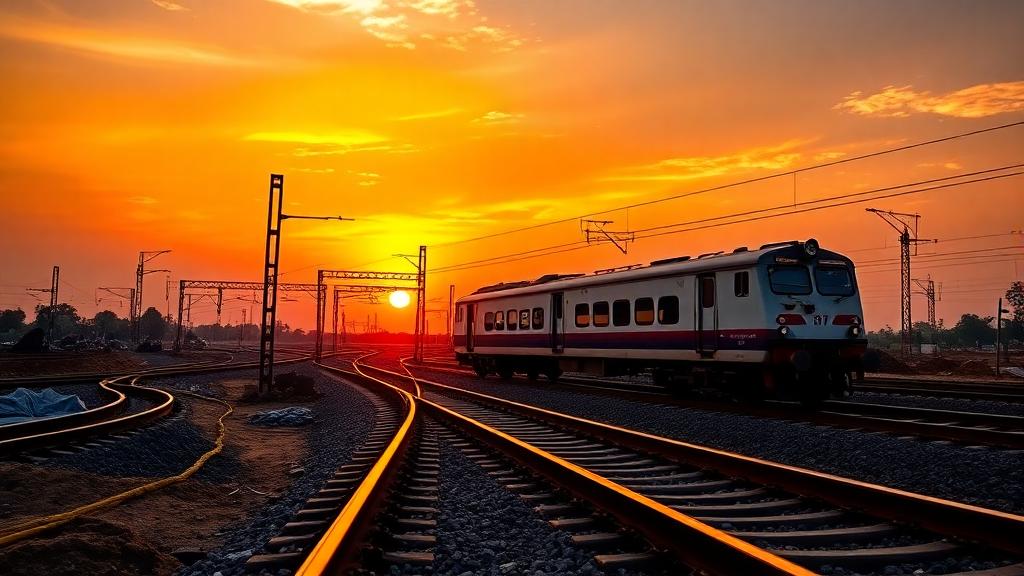
This blog is about the recent ₹18,658 crore approval by the Indian government for expanding railway projects across three major states – Maharashtra, Odisha, and Chhattisgarh. The goal? More jobs, better freight movement, faster travel, and a push towards a greener, stronger economy. But while the announcement is big, many people are asking – will it actually work? Or is it just another flashy promise that might get delayed or quietly fade out?
Change on the Tracks: What’s Happening on Ground?
So here’s the scene. On April 6, 2025, the Indian Cabinet gave the green signal for four massive railway projects. These will cover over 1,247 kilometers and touch 15 districts. We’re talking lines like Sambalpur–Jarapada’s third and fourth tracks, and the Gondia–Balharshah doubling. And just this morning, the Railways Ministry said that work has already kicked off for the 5th and 6th lines between Kharsia and Naya Raipur. That’s in Chhattisgarh’s Baloda Bazar area.
Now that’s fast. Bulldozers have rolled in, and workers are on site. The vibe on ground? People are hopeful. There’s excitement in small towns nearby. Some say this might finally bring real development. The government says this project will carry almost 89 million tonnes of goods each year — mostly coal, cement, and iron ore. Plus, about 4.7 million people from over 3,000 villages will get better connectivity. And 38 million human-days of jobs? That’s big talk.
Also, they say this shift to rail will save 95 crore litres of diesel. That’s like planting 19 crore trees. A bold number, but sounds nice on paper, right?
Not All Smooth: Execution Is the Real Test
Here’s the thing — planning is one part, doing it is another. People on social media, especially on X (earlier Twitter), are already talking about possible delays. In Odisha’s Sambalpur region, some land disputes are slowing things down. And anyone who’s followed Indian rail projects knows — land problems, paperwork, and contractor delays can stretch timelines easily.
Yes, this entire thing is part of PM Gati Shakti — that mega plan to boost transport infra. It includes building 19 new stations, including some in underdeveloped districts like Gadchiroli. Good move, no doubt. But still, real work needs time, and lots of coordination. One small snag, and the project can stall for months.
People Are Split: Progress or Another Empty Promise?
If you go online, there’s a tug-of-war. Some folks are excited. They say ₹18,658 crore will boost India’s ₹4.2 trillion economy, bring down transport costs, and even help tourism in small towns. One viral clip showed a farmer from Chhattisgarh smiling ear to ear, saying this rail line might bring a new mandi closer to him.
On the other hand, some folks aren’t so sure. Someone commented, “What happened to VVP-II’s ₹6,839 crore fund? Still stuck somewhere.” Others are pointing at past delays — like how the Sela Tunnel dragged on for years.
Now, the Railways say they’re using the EPC model to finish faster. Basically, one contractor handles design to delivery. Sounds efficient. But still, people are worried. Red tape, budget crunches, even bad weather can slow things down. We’ve seen it before.
A Bigger Picture: Not Just Local, the World Is Watching
This isn’t just about connecting a few towns or shifting cement faster. There’s a global angle too. With the world slowly trying to reduce its dependence on China, India has a chance to step up. And good rail infrastructure is one way to do that. Cheaper freight movement means cheaper exports. That helps us stay competitive.
Also, there’s an environment angle. The government says this move could save 477 crore kg of CO2 emissions. That fits into India’s net-zero goals. So yes, international folks are watching. If India pulls this off, it could really shine. If not, it’ll just be one more missed opportunity.
What Could Happen If This Works
Let’s be positive for a moment. If this rail push works like it’s supposed to, it could mean real change. A young engineer from a remote district like Gadchiroli might finally get a decent job close to home. Farmers could send goods to market faster. Small factories might get better access to raw materials. And travel? Maybe faster, smoother, and safer.
And globally, it could mean fewer oil imports and better export links. For once, India’s name might be taken as an infrastructure success story, not a country stuck in delays.
But Let’s Not Jump the Gun Yet
Honestly, the ₹18,658 crore is a solid number. And the plans do sound promising. But the execution part is still a big question mark. Right now, with a national railway budget of ₹2.62 lakh crore for FY26, even a small slip-up could stretch things thin.
The past hasn’t been very kind either. Think of Delhi-Mumbai railway upgrades — still not finished. Or the Sela Tunnel, which we already talked about. These things remind us that big dreams need solid ground reality.
So What’s the Real Take?
This whole thing the railway expansion has the potential to be a real game-changer. But only if it’s done right. That means quick land work, fewer delays, no shady deals, and regular updates to the public.
Because let’s be real ₹18,658 crore isn’t just a number on a press release. It’s about people. It’s about connecting dreams and opening doors. It’s about a father in Odisha hoping his kids can travel to college more easily. Or a trader in Maharashtra wanting to cut transport costs.
That’s what matters.
Before you go, here’s another good one: ₹6,839 Cr indian Border Plan: Security or Development?
Want more on this topic? Check this out: Cabinet approves additional railway lines for Chhattisgarh, Maharashtra, Odisha

No comments yet. Be the first to comment!